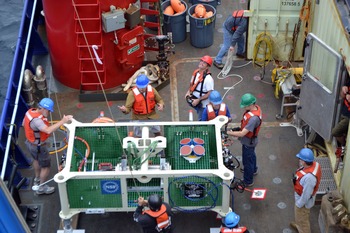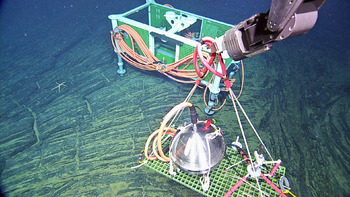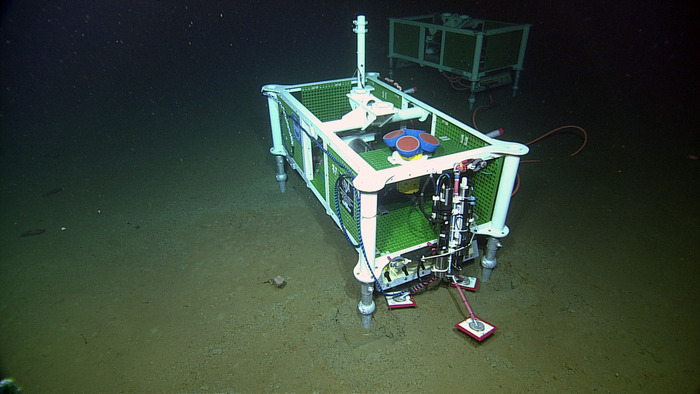
The engineeing team from the Applied Physics Laboratory at the UW and the crew of the R/V Sikuliaq prepare the low-power junction box for installation at the Slope Base site near the Cascadia Margin, 9500 ft beneath the oceans' surface. Credit. M. Elend, University of Washington, V16.

A broadband seismometer and a low-frequency hydrophone are being placed on a flat basaltic plateau at the Axial Seamount Central Caldera Site, awaiting connection to medium power J-Box MJ03F. On a follow-on dive a 4.6-km cable will be installed. This area is of particular interest because the caldera floor is rapidly being uplifted, suggesting that melt is migrating into the magma chamber below. Photo credit: NSF-OOI/UW/CSSF; Dive R1725; V14.
Secondary nodes, also called Junction Boxes were designed and built by the UW Applied Physics Laboratory. Eighteen of them are installed on the Regional Cabled Array - all have been operational since 2014 when they were first installed. The Junction Boxes provide power and two-way commmunications to >140 instruments on the Regional Cabled Array. They are connected to the Primary Nodes through ~33 kilometers of extension cables. Installation depths range from 80 m to 2900 m (~9500 feet) beneath the ocean's surface and in some of the most extreme environments on Earth - hydrothermal vents.
The 'J-Boxes' come in three "flavors" - Medium Power and Low Power Junction Boxes, and Low Voltage Nodes. Eaxh node is configured specific to the instruments and infrastructure (e.g. mooorings) that will be connected to it. They host up to 8 ports, with each junction box providing 375 volts and 1 Gb/s transmission capabilities.
Benthic Experiment Platforms (BEP) that are also part of the Endurance Array, host a Low Power Junction box housing and numerous sensors inside a hazard-resistant frame.


